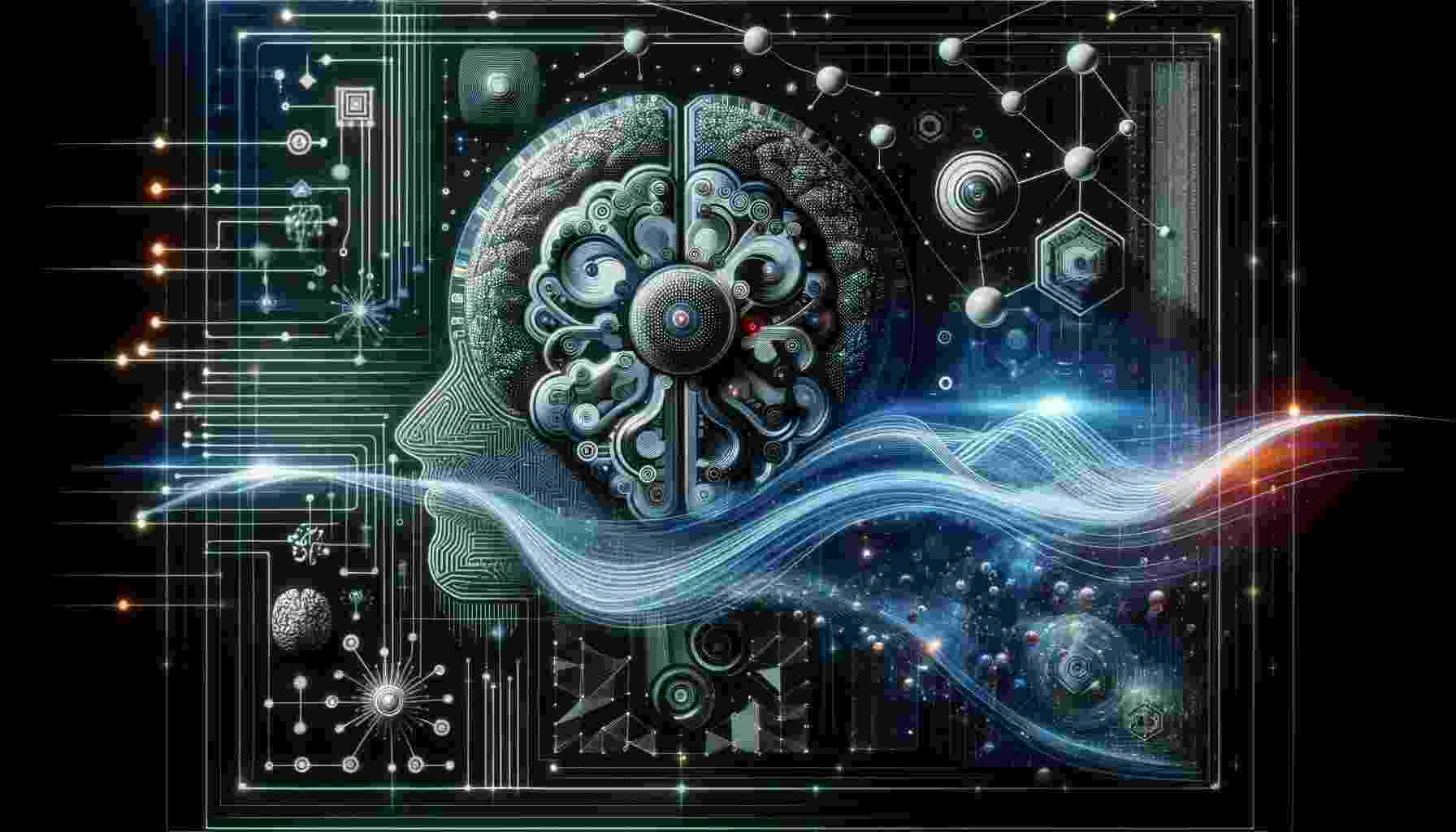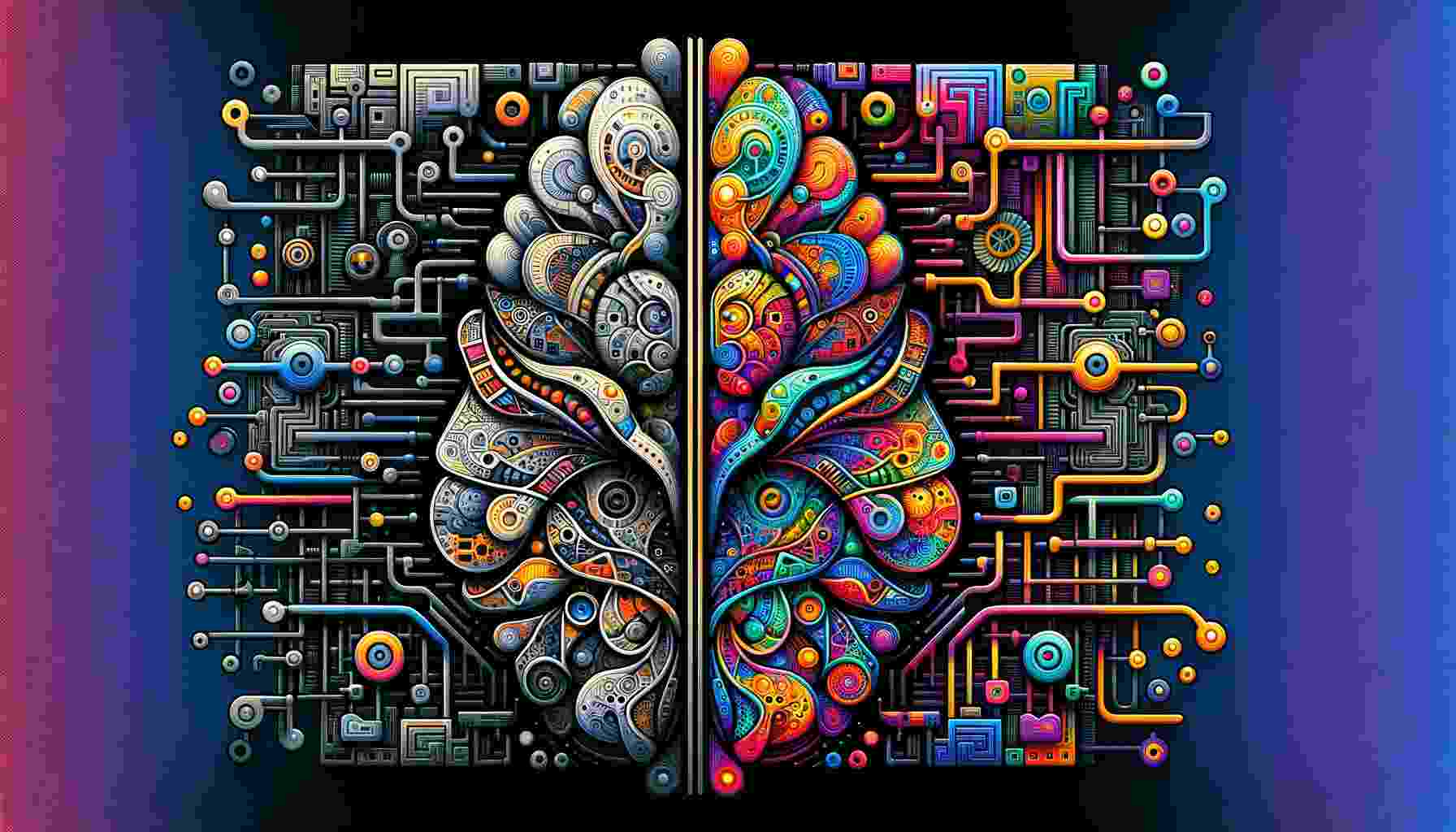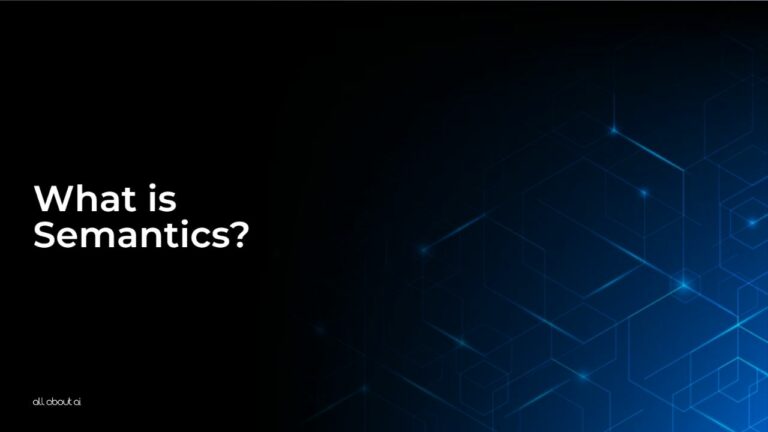What is semantics? In artificial intelligence (AI), it refers to the process of understanding and interpreting the meaning of data. This includes text, speech, and other forms of data. Semantics plays a pivotal role in AI by enabling machines to comprehend context and nuances, much like humans do.
Looking to learn more about semantics in AI? Keep reading this article What is semantics? written by the AI professionals at All About AI.
What is Semantics? The Secret Sauce to Make AI Understand You
In simple words, in artificial intelligence (AI), semantics means teaching computers to understand and make sense of information, like words, talking, and other stuff. It helps AI understand things like we humans do, by grasping context and little details.
How Does Semantics Enhance Artificial Intelligence?
Here’s an overview of how semantics enhances artificial intelligence.

Enhanced Understanding of Context
Incorporating Natural Language Processing (NLP), semantics allows AI to interpret and analyze the context of data, going beyond mere word recognition and delving into the nuances and subtleties of language.
Improved Accuracy in AI Decision Making
Semantic AI’s understanding of context significantly enhances artificial intelligence decision-making processes. This accuracy is critical in sectors like healthcare and finance, where decisions based on semantic analysis can have profound implications.
Enriching Data Quality in AI
By understanding the meaning behind data, semantic AI ensures the improvement of Data Quality in AI, allowing systems to focus on relevant and significant information.
Facilitating Complex Problem Solving
Semantic AI’s ability to handle complex problem-solving tasks is a leap in AI learning processes, enabling AI to understand relationships and patterns within large datasets.
Enhancing User Experience in Business Applications
In Business Applications of AI, semantic AI contributes to more intuitive user experiences by accurately interpreting user requests and providing more relevant and personalized responses.
What Are the Unique Capabilities of Semantic AI Over Traditional AI?
Semantic AI surpasses traditional AI in its ability to understand context and intent. Traditional AI focuses on data patterns and algorithms, while Semantic AI delves into the meaning behind the data.

Contextual Data Interpretation
Semantic AI’s proficiency in interpreting the context behind data makes it superior to traditional AI, especially in fields like Machine Learning and AI in Computer Science, where understanding the meaning is as important as processing the data.
Dynamic Learning and Adaptation
Semantic AI systems demonstrate dynamic learning and adaptation, a key component in AI learning processes, allowing them to improve performance over time based on data inputs.
Enhanced Natural Language Processing
The ability of semantic AI to process natural language, understanding meanings, idioms, and cultural nuances, is a significant step beyond the capabilities of traditional AI.
Advanced Decision-Making Abilities
Semantic AI’s advanced decision-making abilities, grounded in context and intent understanding, make it crucial for AI Decision Making in complex scenarios.
Predictive Analytics and Insights
Semantic AI provides more accurate predictive analytics by understanding underlying meanings and trends in data, offering insights crucial for Knowledge Graphs and data-driven decision-making.
What Are the Implications of Semantics in AI Programming?
Semantics introduces some complications in AI programming. Here’s what it entails.
- Increased Complexity in Algorithm Design: Algorithms need to be sophisticated enough to handle semantics, integrating aspects of Machine Learning and AI Decision Making.
- Higher Demand for Quality Data: Semantic AI’s reliance on high-quality data emphasizes the importance of Data Quality in AI, requiring clean, well-annotated datasets.
- Enhanced Focus on Language and Culture: The implementation of semantics necessitates a deeper understanding of language and cultural contexts, a key aspect in NLP.
- Need for Continuous Learning and Updating: Semantic AI systems must continuously learn and adapt, a principle central to AI Learning Processes, to maintain accuracy and relevance.
What is the Relationship Between Semantics and AI Learning Processes?
The relationship between Semantics and AI Learning Processes is symbiotic. Semantics enriches learning processes by providing context, while AI learning algorithms enhance semantic understanding by identifying patterns and relationships in large datasets.
What Are the Limitations and Future Directions of Semantic AI?
While Semantic AI has made significant strides, it faces several limitations.

Limitations:
- Ambiguity in Language: One of the main challenges for semantic AI is dealing with ambiguities inherent in human language. Different words can have multiple meanings, and the same phrase can imply different things in different contexts. This linguistic complexity poses a significant hurdle for semantic understanding in AI.
- Cultural Nuances: The interpretation of language and symbols can vary greatly across cultures. Semantic AI often struggles to grasp these cultural nuances, leading to misinterpretations, especially in global applications.
- Data Privacy Concerns: As semantic AI systems require access to large volumes of data to learn and make decisions, this raises substantial concerns about user privacy and data security. Ensuring the ethical use and protection of this data is a major challenge.
- High Resource Requirements: The computational power required to process and analyze vast amounts of data for semantic understanding is immense. This high resource demand can limit the scalability and accessibility of semantic AI solutions, especially for smaller organizations.
- Dependency on Quality Data: The effectiveness of semantic AI is heavily dependent on the availability of high-quality, well-annotated data. Poor data quality can lead to inaccurate interpretations and conclusions, undermining the reliability of AI applications.
However, there is a bright future for semantics in AI. Here’s what the future holds.
Future Directions:
- Algorithmic Refinement for Context Understanding: Continued development and refinement of algorithms are essential for better context understanding and reducing ambiguities. This includes advancing natural language processing techniques and incorporating more sophisticated models of human language and interaction.
- Expansion in Multilingual Capabilities: Enhancing the multilingual capabilities of semantic AI is crucial. This involves not just adding more languages but also improving the system’s ability to understand and interpret the subtleties and idioms of each language accurately.
- Integration with IoT Devices: Expanding the application of semantic AI in the realm of the Internet of Things (IoT) can lead to more intuitive and effective human-device interactions, especially in smart homes and smart cities.
- Ethical AI Development: A significant future direction for semantic AI is the focus on ethical development. This includes addressing issues related to bias, privacy, and the responsible use of AI, ensuring that semantic AI systems are fair, transparent, and accountable.
- Cross-Industry Applications: Exploring and expanding the applications of semantic AI across various industries is a promising direction. This includes customized applications in healthcare for patient care, in finance for risk assessment, and in retail for personalized marketing.
How Semantic AI Transforms Business and Technology
Semantic AI is revolutionizing Business and Technology by enabling more intuitive user interfaces, enhancing decision-making processes, and providing deeper insights into customer behavior and market trends.
How is Semantic AI Shaping the Future of Various Industries?
Semantic AI is transforming industries such as healthcare, finance, retail, education, and automotive, by offering personalized experiences, improving risk assessments, enhancing customer service, tailoring educational content, and developing advanced autonomous vehicles.
Want to Read More? Explore These AI Glossaries!
Launch into your AI educational journey with our extensive glossaries, catering to both fresh learners and experienced specialists. Make this your go-to guide for advancing your AI skills and discovering new areas in the field.
What is Automated Planning and Scheduling?:Automated planning and scheduling in AI refers to the process of using artificial intelligence techniques to optimize and automate the allocation of resources, tasks, and activities over time.
- What is Automated Reasoning?: Automated reasoning lies at the core of artificial intelligence, where the focus is on crafting systems that can independently navigate the realm of logical deductions and inferences.
- What is Autonomic Computing?: Autonomic computing, often referred to as self-managing or self-healing computing, is a concept within AI and computer science.
- What is an Autonomous Car?: An autonomous car is a vehicle equipped with advanced sensors, cameras, Lidar, and AI algorithms that allow it to interpret data from its environment and control its movements without human input.
- What is an Autonomous Robot?: An autonomous robot is a machine equipped with sensors, processors, and actuators that enable it to perceive its surroundings, process information, and take actions without human intervention.
FAQs
What is a semantic method in AI?
What is semantic analysis in AI?
What is a semantic network in AI?
What is semantics in artificial intelligence?
What is semantics in machine learning?
Final Words
Semantic AI represents a significant leap in artificial intelligence, moving from mere data processing to understanding and interpreting data. Its impact on technology and business is profound, paving the way for more intuitive, efficient, and intelligent systems.
This article was written to answer the question, “what is semantics” in AI. Looking to learn more about different AI concepts and key terms? Read through the rest of the articles in our AI Definitions Index. Expand your AI knowledge!





